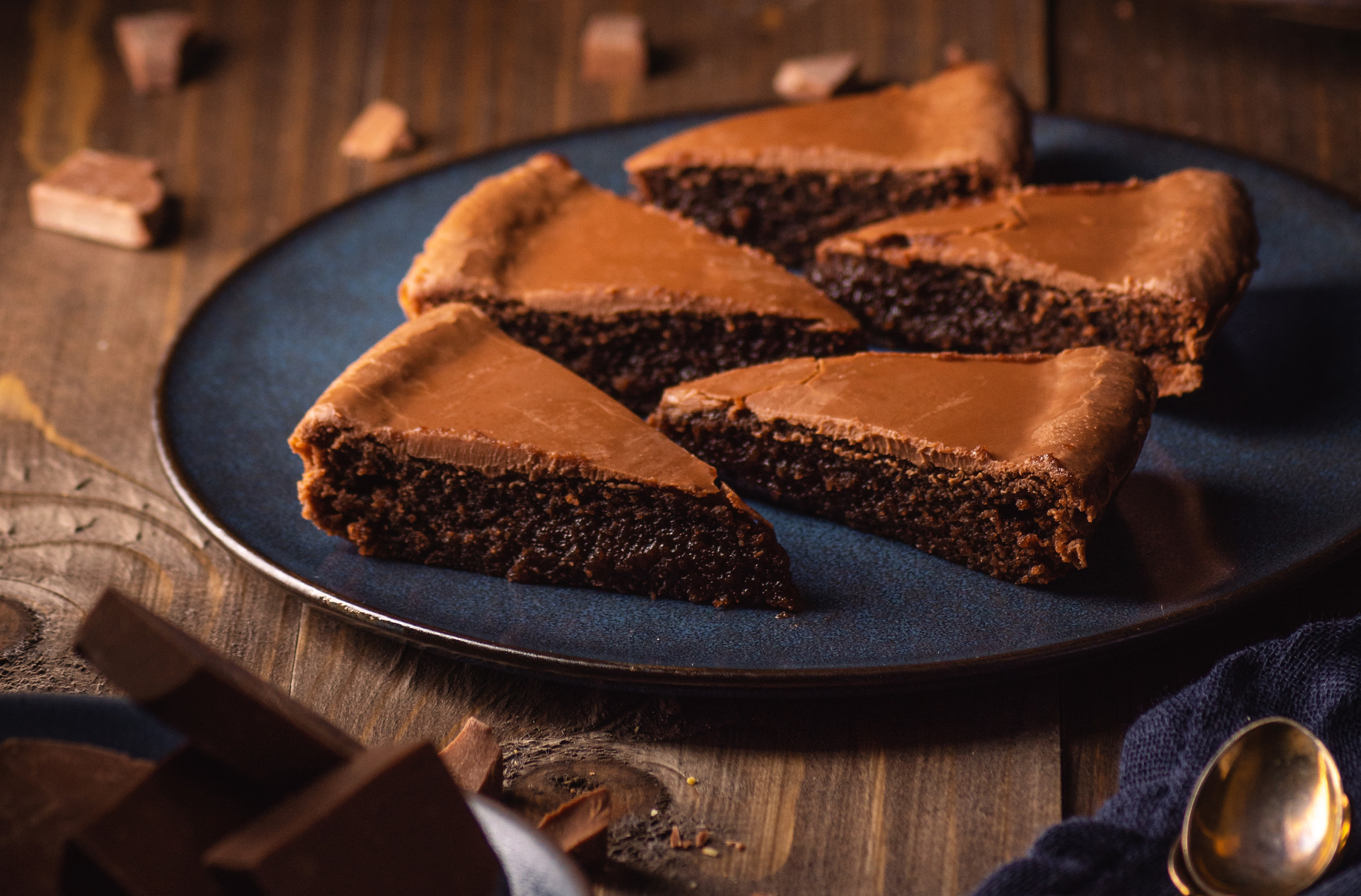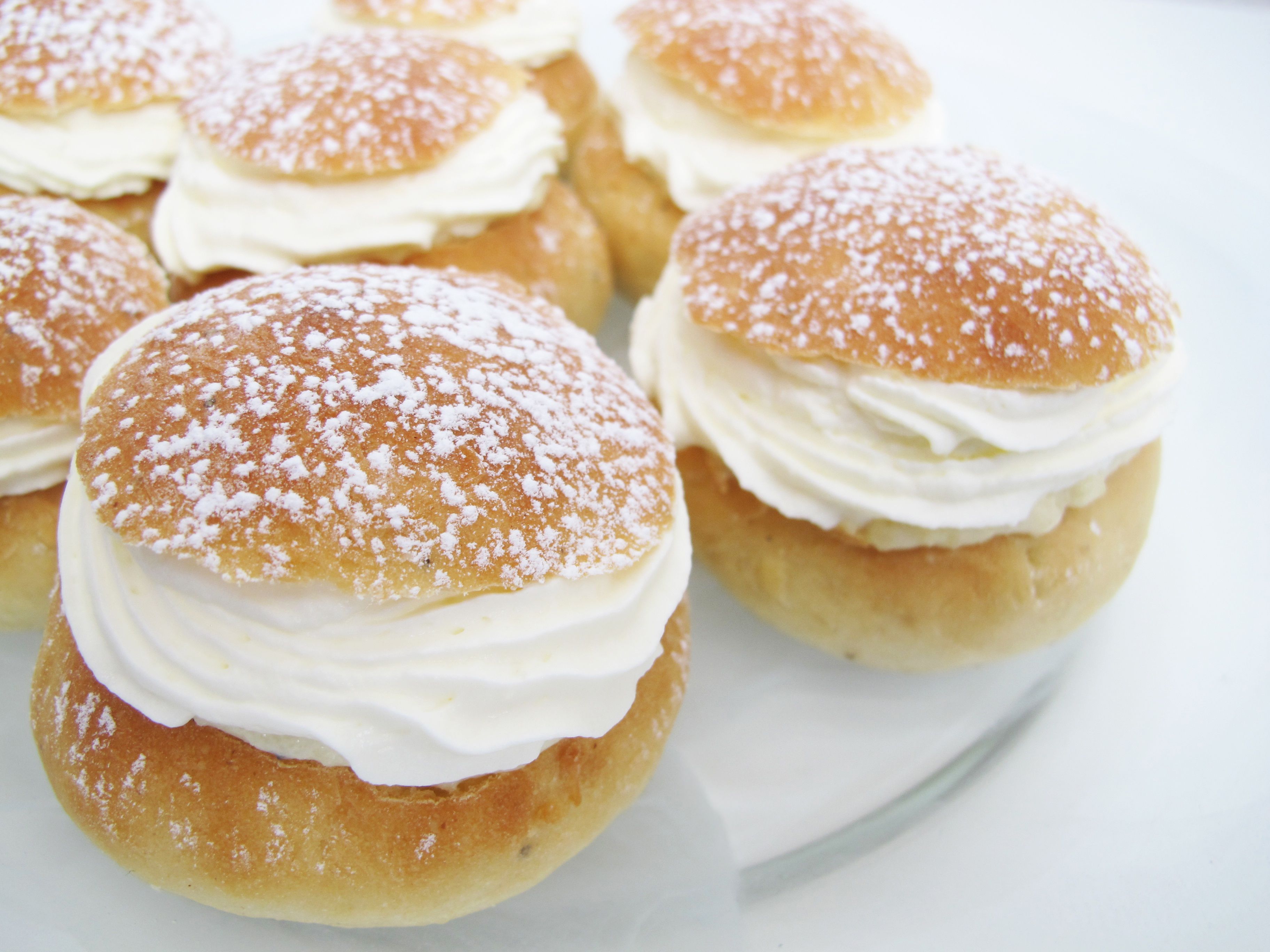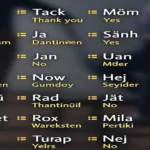“Swedish desserts, like the cinnamon bun, are more than just sweets—they’re a symbol of togetherness and tradition.’ They explained that these treats are deeply tied to Swedish culture, especially during fika, the beloved coffee break. It’s not just about the flavors; it’s about taking a moment to pause, connect with others, and enjoy the simple pleasures of life. In Sweden, dessert is more than food—it’s a way of living.”
One thing I love about Sweden is its amazing pastries and desserts. I always reach for a cinnamon bun first. You can find it in almost every café and home. It is not just a sweet snack—it feels like a hug. We even celebrate it on October 4th, which we call Kanelbullens dag, or Cinnamon Bun Day. I look forward to that day every year.
I enjoy my cinnamon bun with a hot cup of coffee during fika, our cozy coffee break. I breathe in the warm smell of fresh buns and take a big bite. The bun feels soft, and the cinnamon tastes just right. Every time I eat one, I slow down and smile.
If you have never tried a Swedish cinnamon bun, you should. It is more than food—it is a moment to share with friends or family. That is why it means so much here in Sweden.
Swedish Desserts
I love Swedish sweets because they taste simple and remind me of good times. When I was small, my grandmother took me to the forest to pick lingonberries. We used those berries in tarts and cakes. I still smell the sweet, tangy scent in the kitchen. She also made buns with cardamom and cookies with cinnamon. Now, when I eat a chocolate cake called kladdkaka or a soft cinnamon bun, I think of her. I see our family together on cold nights, drinking hot cocoa. Sometimes I bake these treats with my own children. Each bite tells me a story of home and family joy.
Cultural Significance
I love how desserts bring us together in Sweden. At fika time, I sit with my friends and pour hot coffee into our cups. We pass around cinnamon buns, cakes, and cookies. We smile and talk about our day. Sometimes we even share sandwiches or fruit. The sweet treats taste better when we enjoy them as a group. I feel warm inside when we laugh over a fresh pastry. These small breaks give me energy and make me happy. Every fika with friends turns an ordinary afternoon into a special moment.
Traditional Vs. Modern
Traditional Swedish desserts often feature ingredients like cinnamon, cardamom, and berries. Classic treats include “kanelbullar” (cinnamon buns) and “prinsesstårta” (princess cake). These sweets have been enjoyed for generations.
Modern Swedish desserts incorporate global influences and new techniques. Chefs experiment with flavors and presentation. They create innovative desserts while honoring traditional roots. This blend of old and new keeps Swedish sweets exciting and fresh.

Overview Of Popular Swedish Desserts
Sweden’s dessert scene blends old and new. I taste everything from creamy cakes to spiced cookies. Each treat makes me feel closer to our rich culture.
Classic Choices
Semla
Semla is a light bun spiced with cardamom. Bakers cut off the top and remove a small bit of the inside. They mix that bread with almond paste and a little milk, then fill the bun. A swirl of whipped cream goes on top, and a dusting of powdered sugar finishes it. People enjoy semla during Lent or on Fat Tuesday. Some even float it in hot milk, a style called “hetvägg.”
Kanelbulle
Kanelbulle is a soft roll swirled with cinnamon and sugar. The dough is rolled into spirals and baked until golden. Pearl sugar sprinkled on top adds a gentle crunch. It is best served warm with a cup of coffee during fika. Every October 4th, Swedes celebrate Cinnamon Bun Day to honor this treat.
Prinsesstårta
Prinsesstårta is a sponge cake layered with vanilla custard, whipped cream, and berry jam. The whole cake is wrapped in a smooth layer of green marzipan. A small pink marzipan rose sits on top as a decoration. It has a light, airy taste and bright, colorful layers. Families serve it at birthdays, weddings, and other special occasions.
Contemporary Favorites
Kladdkaka
Kladdkaka is a gooey chocolate cake that melts in the mouth. The rich chocolate aroma fills the kitchen while it bakes. A slice served warm with whipped cream or vanilla ice cream adds extra comfort. The outside is lightly crisp, and the center stays soft and fudgy. It is a simple yet deeply satisfying dessert.
Chokladbollar
Chokladbollar are no‑bake oat and cocoa balls rolled in coconut flakes or pearl sugar. They are quick to mix up at home: combine oats, cocoa powder, sugar, and butter, then shape into small balls. Chokladbollar keep well in the fridge and make a perfect snack any time of day.
Lingonberry Parfait
Lingonberry parfait layers tart lingonberries with smooth sweet cream in a clear glass. The bright red berries contrast with the white cream to create an inviting look. Each spoonful brings a lively mix of sour and sweet. This light, chilled dessert is ideal for warm weather and feels both fresh and bright.
o4-mini
The Reign Of Semla
Semla Often referred to as the dessert that “killed a king,” semla is a sweet roll filled with almond paste and whipped cream. The story goes that King Adolf Frederick of Sweden indulged in too many semlor, leading to his demise. This dessert is celebrated for its rich flavor and cultural significance, especially during Lent.
Sweden is known for its beautiful landscapes, rich culture, and delicious food. Among its many culinary delights, one dessert stands out above the rest: Semla. This beloved treat has captured the hearts of Swedes and dessert lovers worldwide. Let’s dive into the story of Semla and see why it reigns supreme in Sweden.
History And Origin
The Semla has a rich history dating back to medieval times. Originally, it was a simple bread bun eaten before Lent. Over time, it evolved into a more decadent treat. By the 18th century, Semla became a sweet bun filled with almond paste and whipped cream.
Today, Semla is enjoyed in various forms across Sweden. Traditional Semla is still the most popular, but you can find many modern variations. Despite its evolution, the essence of Semla remains the same. It is a symbol of Swedish culinary heritage and tradition.
Ingredients And Preparation
The key ingredients of Semla include cardamom-spiced wheat buns, almond paste, and whipped cream. The buns are soft and fragrant, providing a perfect base for the fillings. Almond paste adds a rich, nutty flavor, while whipped cream gives it a light, airy texture.
Preparing Semla is both an art and a tradition. Bakers first prepare the buns and let them cool. Then, they cut off the tops and scoop out a bit of the inside. They mix the scooped-out bread with almond paste and milk to create a smooth filling. Finally, they fill the buns with this mixture, add a generous dollop of whipped cream, and place the tops back on. A dusting of powdered sugar completes the dessert.
The result is a delightful treat that is both rich and light. Each bite offers a perfect balance of flavors and textures. It’s no wonder Semla holds a special place in Swedish hearts and kitchens.

How To Enjoy Semla
The semla is a beloved Swedish dessert that brings joy to many. This delightful pastry, a cardamom-spiced bun filled with almond paste and topped with whipped cream, is a must-try. Understanding how to enjoy it can make your experience even better.
Seasonal Availability
Semla is traditionally enjoyed during the season of Lent, especially on Shrove Tuesday. This day is also known as Fat Tuesday or Fettisdagen in Swedish. While you can find semla in some bakeries all year round, it is most popular and widely available in the weeks leading up to Easter.
Serving Suggestions
To get the full experience of a semla, it’s best served fresh. Here are some popular ways to enjoy it:
Traditional Method: Eat it as is, with a cup of coffee or tea.
Hetvägg: Warm the semla in a bowl of hot milk. This is a classic way to enjoy it on cold days.
Modern Twists: Some enjoy semla with added flavors like chocolate or fruit jams. Experiment and find your favorite.
Whether you stick to tradition or try something new, the semla promises a delightful experience.
Regional Variations Of Semla
Semla is a beloved dessert in Sweden. It is a traditional sweet roll filled with almond paste and whipped cream. Each region has its own unique twist on this classic treat. These variations make semla even more special.
Unique Twists
In the north, semla often includes a hint of cardamom. This adds a unique flavor to the dessert. Some regions add vanilla to the whipped cream. This makes the semla extra creamy and delicious.
In other areas, semla is served with warm milk. This is called “hetvägg”. It is a comforting way to enjoy semla, especially in winter. Each twist brings a new taste experience.
Local Preferences
In Gothenburg, locals prefer their semla with a little extra almond paste. This creates a richer taste. In Malmö, people like their semla smaller and more delicate. These local preferences show how diverse semla can be.
Stockholm residents enjoy semla with a dusting of powdered sugar on top. This gives the dessert a light, sweet touch. Each region’s preference adds to the semla’s charm.
These regional variations of semla highlight the dessert’s versatility. Each region adds its own flavor and touch. This makes semla a truly national favorite.
Competing Favorites
Sweden offers a delightful array of desserts, each competing for the top spot. Among the most beloved are kanelbullar and prinsesstårta. These sweet treats hold a special place in Swedish hearts. Let’s dive into these competing favorites.
Kanelbullar
Kanelbullar, or cinnamon buns, are a Swedish classic. They are swirls of dough, cinnamon, and sugar. Often, they are topped with pearl sugar. These buns are enjoyed during fika, a coffee break tradition. The aroma of cinnamon fills Swedish homes, especially on October 4th, Kanelbullens Dag.
Making kanelbullar requires simple ingredients. Flour, sugar, butter, and yeast. Yet, the result is magical. Soft, sweet, and fragrant. Perfect with a cup of coffee. It’s no wonder kanelbullar are loved by many.
Prinsesstårta
Prinsesstårta, or Princess Cake, is another Swedish favorite. This cake is a sight to behold. It has layers of sponge cake, whipped cream, and custard. All covered in green marzipan. The cake is often topped with a pink marzipan rose. It’s a popular choice for celebrations and birthdays.
The cake’s history dates back to the 1920s. It was created for Swedish princesses. Hence the name. Today, prinsesstårta is enjoyed by everyone. The combination of flavors and textures is irresistible. Light, creamy, and delicious.
Semla In Swedish Culture
Semla is a beloved dessert in Sweden. These cream-filled buns have a rich history in Swedish culture. Swedes enjoy Semla during the Lenten season. The dessert is especially popular on Fat Tuesday, known as “Fettisdagen” in Sweden. This day is dedicated to indulging in these delicious treats. But Semla’s influence goes beyond just being a tasty dessert.
Literature And Media
Semla has a strong presence in Swedish literature. Many authors mention Semla in their works. It symbolizes comfort and tradition. In films and TV shows, characters often enjoy Semla. These scenes highlight the dessert’s cultural importance. The media’s portrayal of Semla helps keep its tradition alive. People are reminded of its significance every time they see it.
Festivals And Celebrations
Semla plays a key role in Swedish festivals. During Fettisdagen, bakeries sell millions of Semlor. Families gather to enjoy these special buns. Many community events feature Semla-eating contests. These celebrations create a sense of unity. People bond over their shared love for Semla. The dessert also appears at other festive occasions. It is a staple at birthdays and family gatherings. Semla brings joy and sweetness to any celebration.

Frequently Asked Questions
What makes Swedish cinnamon buns special?
Swedish cinnamon buns shine with soft dough and warm spices. I use my focus keyword “Swedish cinnamon buns” to describe that perfect swirl of cinnamon and sugar.
How do I enjoy Swedish cinnamon buns best?
I toast them lightly or warm them with coffee. These “Swedish cinnamon buns” always taste best fresh from the oven.
Can I make Swedish cinnamon buns at home?
A: Yes! I follow a simple recipe with flour, yeast, butter, sugar, and cinnamon. My “Swedish cinnamon buns” turn out soft and sweet every time.
Conclusion
Swedish desserts taste wonderful. I love kanelbullar. They are soft buns with cinnamon and sugar. I also like prinsesstårta. It is a cake with layers of sponge, cream, jam, and green marzipan. My favorite is semla. It is a bun with cardamom, almond paste, and whipped cream. When I share these treats, I share Swedish culture.
So, next time you visit Sweden, try this delightful treat. It’s a true taste of Swedish culture. Enjoy the rich, buttery pastry and cinnamon. You won’t be disappointed.






